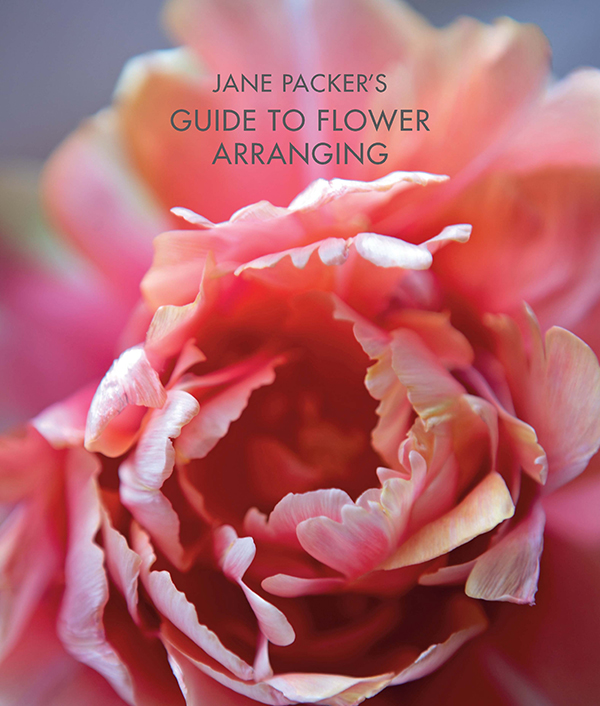
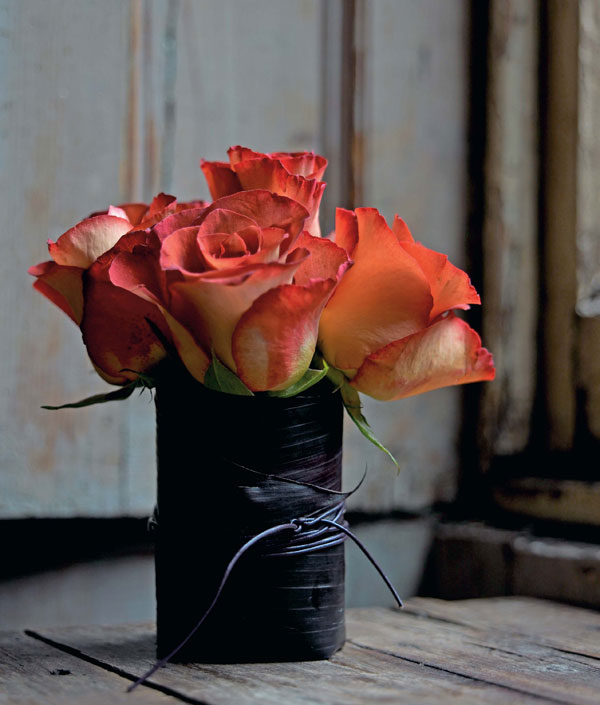 Photography by Paul Massey Prop styling by Jo Barnes
Photography by Paul Massey Prop styling by Jo Barnes  JANE PACKERS GUIDE TO FLOWER ARRANGING Easy techniques for fabulous flower arranging
JANE PACKERS GUIDE TO FLOWER ARRANGING Easy techniques for fabulous flower arranging  LONDON NEW YORK
LONDON NEW YORK 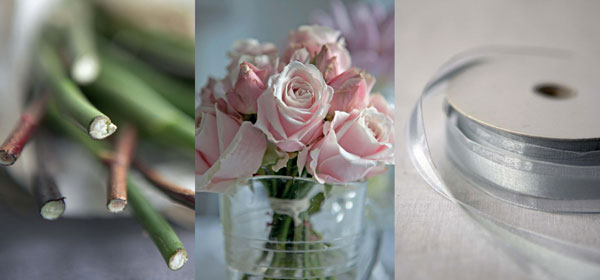 Senior designer Megan Smith Commissioning editor Annabel Morgan Location research Jess Walton Production Patricia Harrington Art director Leslie Harrington Publishing director Alison Starling Prop styling Jo Barnes First published in the United States in 2008. This paperback edition first published in 2011 by Ryland Peters & Small, Inc. 519 Broadway, 5th Floor New York, NY 10012 www.rylandpeters.com 10 9 8 7 6 5 4 3 2 1 Text Jane Packer 2008, 2011 Design and photographs Ryland Peters & Small 2008, 2011 The authors moral rights have been asserted. All rights reserved. No part of this publication may be reproduced, stored in a retrieval system, or transmitted in any form or by any means, electronic, mechanical, photocopying, or otherwise, without the prior permission of the publisher. eISBN: 978-1-84975-406-4 ISBN: 978-1-84975-188-9 Printed and bound in China
Senior designer Megan Smith Commissioning editor Annabel Morgan Location research Jess Walton Production Patricia Harrington Art director Leslie Harrington Publishing director Alison Starling Prop styling Jo Barnes First published in the United States in 2008. This paperback edition first published in 2011 by Ryland Peters & Small, Inc. 519 Broadway, 5th Floor New York, NY 10012 www.rylandpeters.com 10 9 8 7 6 5 4 3 2 1 Text Jane Packer 2008, 2011 Design and photographs Ryland Peters & Small 2008, 2011 The authors moral rights have been asserted. All rights reserved. No part of this publication may be reproduced, stored in a retrieval system, or transmitted in any form or by any means, electronic, mechanical, photocopying, or otherwise, without the prior permission of the publisher. eISBN: 978-1-84975-406-4 ISBN: 978-1-84975-188-9 Printed and bound in China  Contents WHEN I FIRST OPENED MY SHOP BACK IN 1982 , it was a small place in Londons James Street.
Contents WHEN I FIRST OPENED MY SHOP BACK IN 1982 , it was a small place in Londons James Street.
Although I believed passionately that flowers added so much to an interior and that fashions in flowers were influenced by wider fashion trends, it took me some time to convince others. With a lot of help from certain magazine editors, I began to see my name mentioned in features that I had supplied flowers for. Slowly, my reputation grew, and so did the understanding that, for many businesses and homes, flowers had become more than just a token gesturethey were now a fashion statement. By this time, we were inundated with requests to train with us, and so the idea of the Jane Packer flower school was born. The London school opened in 1990. Nearly twenty years later, it is located in Marylebone village at 3234 New Cavendish Street, and I am amazed at how many people from all over the world have crossed the threshold.
We have opened several stores and schools internationallyin New York, as well as in Tokyo, Korea, and, most recently, Kuwaitsomething I never imagined possible. Thank goodness now floristry and gardening have become well-respected creative industries. I am extremely proud to know that we have trained so many people in the Jane Packer philosophy, and that so many successful businesses have been influenced by our work. Over the years I have been asked countless times to define my own personal style. Its an impossible task in many ways, as my taste and inspiration is constantly evolving and changing, in tune with other trends and fashions. However, what is important is learning and mastering basic floristry techniques, as this will enable you to change and adapt your own style as you encounter exciting new influences.
This is what we teach at the Jane Packer schools and the ground that I cover in this book. Ive tried to cram as much as I can into the book, starting off with simple tied posies and progressing to intricate wired bouquets and large-scale pedestals, with so much in between. So, whether you want easily achievable looks for vases, dramatic table centerpieces, or even bridal bouquets, its all here. Enjoy the book, and good luck. Who knows: maybe Ill meet you at one of our schools some dayI hope so! 
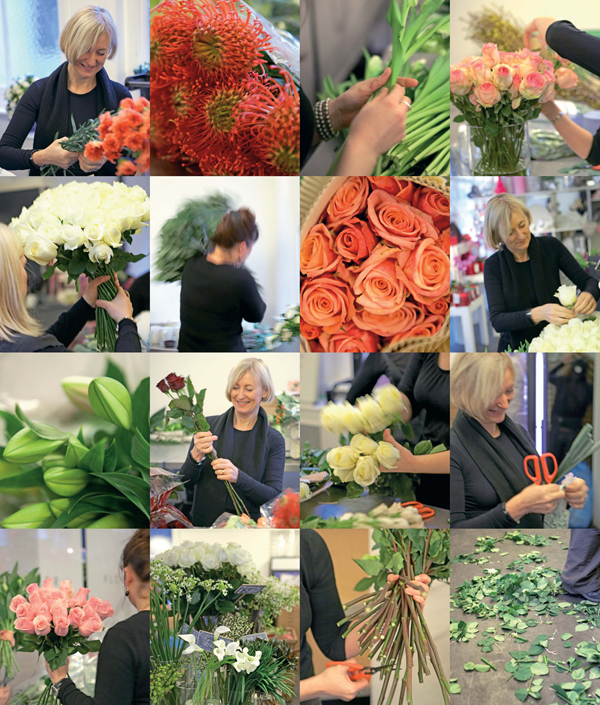
 BUYING FLOWERS When youre shopping for flowers, you want fresh blooms that will enjoy a long vase life. Look out for firm petals, leaves, and stems, and flowers with a good number of buds that havent yet opened.
BUYING FLOWERS When youre shopping for flowers, you want fresh blooms that will enjoy a long vase life. Look out for firm petals, leaves, and stems, and flowers with a good number of buds that havent yet opened.
There are also some telltale signs that inform you when blooms are past their best. I always look at the foliagewilted, soft, and yellowing leaves (or stems) are an indication that flowers are old and tired and may have been left out of water for some time. Inspect the leaves and stems, too, avoiding any that are crushed or damaged. With roses, peonies, or other large-petaled flowers, study the petals. If their veins are prominent, the flowers are dehydrated and not worth your hard-earned cash. Examine the base of the stems.
If they are black or discolored, they havent been cut for a while and have probably been hanging around for some time. If you are doing the flowers for a party or wedding and want them to be at their peak, bear in mind that you may need to buy them at different times. Lilies, for example, take time to open, as do amaryllis and hyacinths. Allow enough time for them to come into flower; otherwise, the flowers will be green and your arrangements will lack color. AMARYLLIS These arrive from the grower in tight bud and will open slowly. The stems should be strong, and bright green, and will be crisp when cut.
CARNATIONS These should be bought while still quite tight. If the petals are soft or curling inward and the center stamens are showing, avoid them. With young flowers, you will be able to brush the firm petals open with your hand. LILIES A full-blown lily is obviously in the late stages of its life. But sometimes lily stems are refrigerated, and their tight buds conceal the fact that they are past their best. Look out for drooping or wilting leaves.
SUMMER FLOWERS Stocks, dahlias, delphiniums, scabious, and alliums all have soft stems that deteriorate quickly in water, turning soft and slimy if the water is not changed regularly. TULIPS Fresh tulip stems will make an audible squeaking sound when they rub together.  CONDITIONING AND REVIVING I once purchased a huge number of stock flowers only for them to die overnightpanic! Thank goodness we are close to Londons Covent Garden Market, so we dashed to buy more flowers and saved the day. My fatal error was storing the flowers, still in their cellophane wrappers, in a damp basement, the result being floppy, wilting flowers. Whatever the flower, as soon as you purchase it remove the cellophane and release the flowers from any bindings, so air can circulate freely between the blooms. Many times I see bunches of roses stored wrapped in cellophane.
CONDITIONING AND REVIVING I once purchased a huge number of stock flowers only for them to die overnightpanic! Thank goodness we are close to Londons Covent Garden Market, so we dashed to buy more flowers and saved the day. My fatal error was storing the flowers, still in their cellophane wrappers, in a damp basement, the result being floppy, wilting flowers. Whatever the flower, as soon as you purchase it remove the cellophane and release the flowers from any bindings, so air can circulate freely between the blooms. Many times I see bunches of roses stored wrapped in cellophane.
The giveaway is usually one or two brown petals among the heads. Avoid them like the plague, because as you unwrap the bunch its very likely that a flurry of petals and whole heads will fall to the floor. CONDITIONING CUT FLOWERS When you get flowers home, it is important to re-cut the stems before arranging them. Stems dry out very quickly, leaving a surface that will not absorb any more water. Cut the stems at an angle to enlarge the surface area and enable more water to be taken up. Next, remove any foliage from the lower part of the stem.
Next page
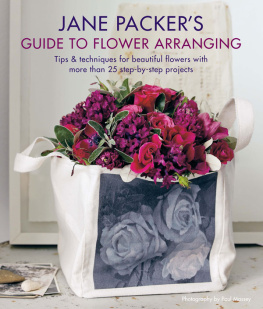
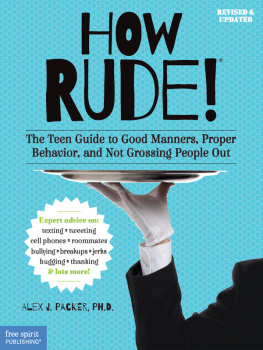



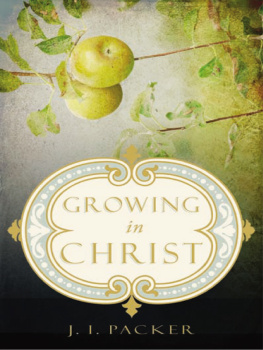


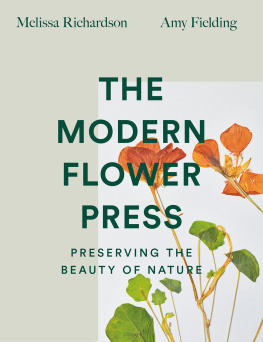

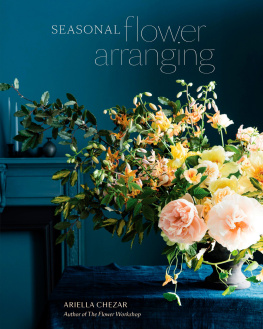
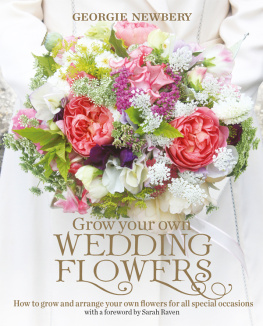

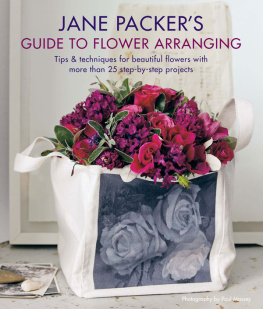
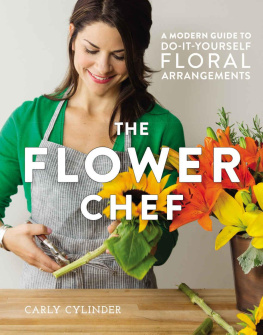

 Photography by Paul Massey Prop styling by Jo Barnes
Photography by Paul Massey Prop styling by Jo Barnes  JANE PACKERS GUIDE TO FLOWER ARRANGING Easy techniques for fabulous flower arranging
JANE PACKERS GUIDE TO FLOWER ARRANGING Easy techniques for fabulous flower arranging  LONDON NEW YORK
LONDON NEW YORK  Senior designer Megan Smith Commissioning editor Annabel Morgan Location research Jess Walton Production Patricia Harrington Art director Leslie Harrington Publishing director Alison Starling Prop styling Jo Barnes First published in the United States in 2008. This paperback edition first published in 2011 by Ryland Peters & Small, Inc. 519 Broadway, 5th Floor New York, NY 10012 www.rylandpeters.com 10 9 8 7 6 5 4 3 2 1 Text Jane Packer 2008, 2011 Design and photographs Ryland Peters & Small 2008, 2011 The authors moral rights have been asserted. All rights reserved. No part of this publication may be reproduced, stored in a retrieval system, or transmitted in any form or by any means, electronic, mechanical, photocopying, or otherwise, without the prior permission of the publisher. eISBN: 978-1-84975-406-4 ISBN: 978-1-84975-188-9 Printed and bound in China
Senior designer Megan Smith Commissioning editor Annabel Morgan Location research Jess Walton Production Patricia Harrington Art director Leslie Harrington Publishing director Alison Starling Prop styling Jo Barnes First published in the United States in 2008. This paperback edition first published in 2011 by Ryland Peters & Small, Inc. 519 Broadway, 5th Floor New York, NY 10012 www.rylandpeters.com 10 9 8 7 6 5 4 3 2 1 Text Jane Packer 2008, 2011 Design and photographs Ryland Peters & Small 2008, 2011 The authors moral rights have been asserted. All rights reserved. No part of this publication may be reproduced, stored in a retrieval system, or transmitted in any form or by any means, electronic, mechanical, photocopying, or otherwise, without the prior permission of the publisher. eISBN: 978-1-84975-406-4 ISBN: 978-1-84975-188-9 Printed and bound in China  Contents WHEN I FIRST OPENED MY SHOP BACK IN 1982 , it was a small place in Londons James Street.
Contents WHEN I FIRST OPENED MY SHOP BACK IN 1982 , it was a small place in Londons James Street.

 BUYING FLOWERS When youre shopping for flowers, you want fresh blooms that will enjoy a long vase life. Look out for firm petals, leaves, and stems, and flowers with a good number of buds that havent yet opened.
BUYING FLOWERS When youre shopping for flowers, you want fresh blooms that will enjoy a long vase life. Look out for firm petals, leaves, and stems, and flowers with a good number of buds that havent yet opened. CONDITIONING AND REVIVING I once purchased a huge number of stock flowers only for them to die overnightpanic! Thank goodness we are close to Londons Covent Garden Market, so we dashed to buy more flowers and saved the day. My fatal error was storing the flowers, still in their cellophane wrappers, in a damp basement, the result being floppy, wilting flowers. Whatever the flower, as soon as you purchase it remove the cellophane and release the flowers from any bindings, so air can circulate freely between the blooms. Many times I see bunches of roses stored wrapped in cellophane.
CONDITIONING AND REVIVING I once purchased a huge number of stock flowers only for them to die overnightpanic! Thank goodness we are close to Londons Covent Garden Market, so we dashed to buy more flowers and saved the day. My fatal error was storing the flowers, still in their cellophane wrappers, in a damp basement, the result being floppy, wilting flowers. Whatever the flower, as soon as you purchase it remove the cellophane and release the flowers from any bindings, so air can circulate freely between the blooms. Many times I see bunches of roses stored wrapped in cellophane.